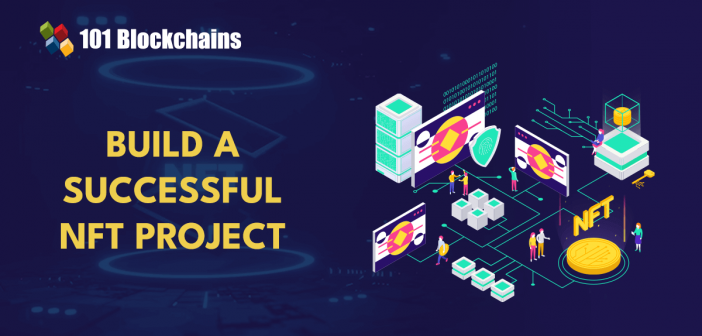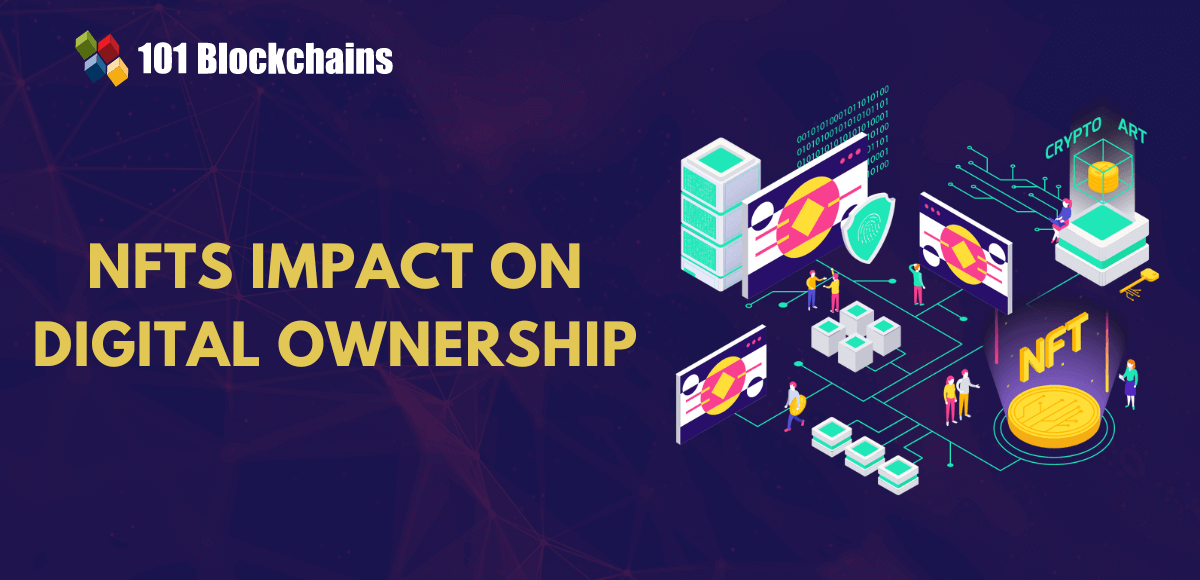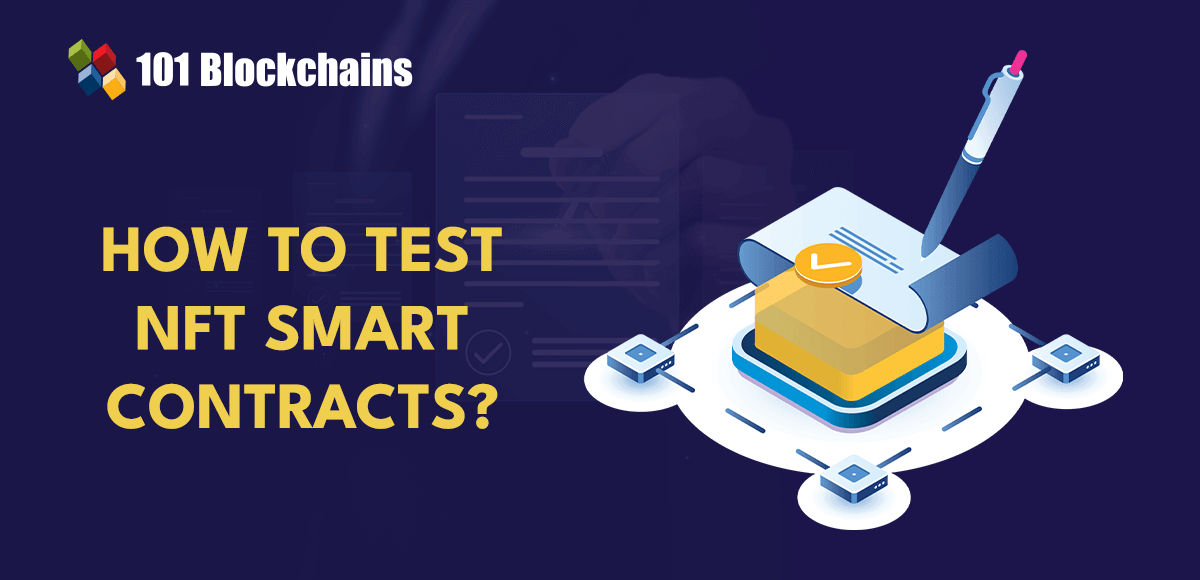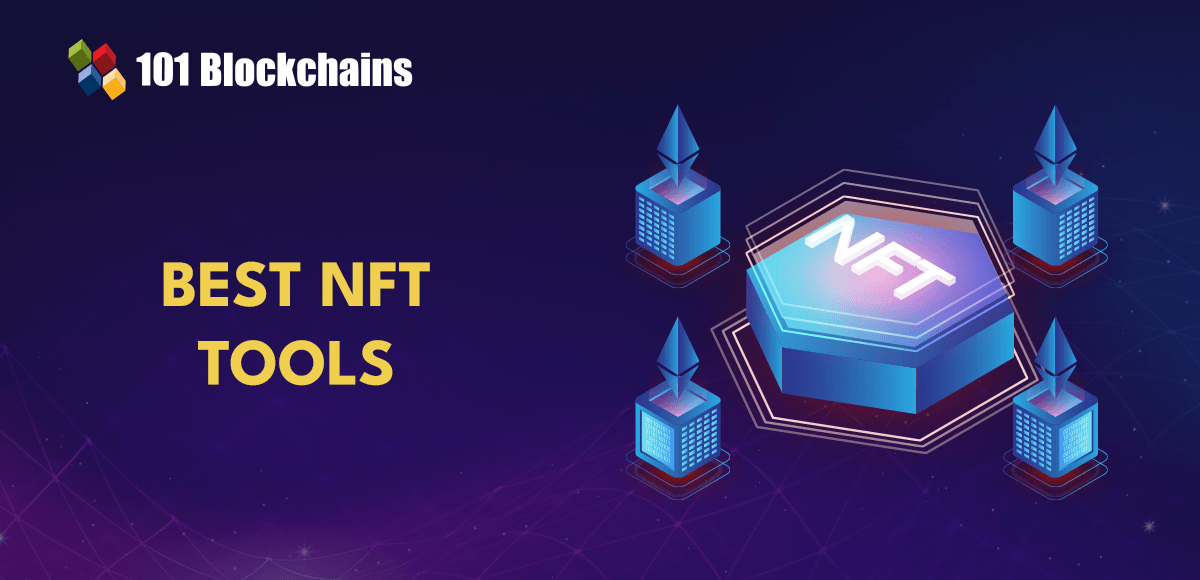Learn how blockchain truly works, master key definitions, and uncover what makes smart contracts so "smart." Dive into the fundamentals, gain valuable insights, and start your blockchain journey today!

- NFT
Georgia Weston
- on November 17, 2023
How to Build a Successful NFT Project?
Non-fungible tokens, or NFTs, are the most popular trend in technological innovation, and they have promising value advantages. NFTs provide a novel approach for interacting with digital assets and content. The unique class of digital assets offers a new perspective on ownership of assets. NFTs enable complete control over the utilization of digital assets. Interestingly, the steps to build NFT project have become the center of attention in news updates about blockchain and web3.
Do you know that NFTs sell for millions of dollars? On the other hand, the majority of NFTs sell for an average price of $200. However, non-fungible tokens are the core components of the emerging web3 ecosystem. NFTs have the ability to provide verifiable proof of ownership and identity. Let us learn more about the best practices for developing NFT projects with better chances for success.
Significance of NFT Development
NFT development offers a new avenue for businesses to develop, mint, and manage NFTs in their digital transformation strategies. Non-fungible tokens serve as unique identifiers, which makes them different from traditional collectibles or physical items. The popularity of successful NFT projects encourages businesses to use them in their marketing strategies.
For example, NFTs can help in launching digital solutions such as music albums, artworks, and eBooks as marketing tools. NFTs could help ensure that businesses could have unique rights over their assets. In addition, business owners could also share them with other agents in the blockchain ecosystem.
You can find the answer to “What is NFT project” in the growing popularity of digital assets. The NFT project could be a collectible for representing ownership of digital assets or a new collection of animated characters. Businesses want to leverage NFTs to increase the value of digital assets. Therefore, the demand for NFT development professionals will also increase by considerable margins in the future.
Excited to develop an in-depth understanding of solidity’s best practices and the tools needed for developing and testing an NFT marketplace, Enroll now in the NFT Development Course
Best Practices for NFT Development
The widespread popularity of NFTs in gaming, sports, and art has served as vital opportunities for inspiring communities alongside increasing engagement. If you want to find out how to make a successful NFT project, then you must know that leaders must take some critical decisions at each step. What are the distinct stages of NFT development lifecycle? Here is an overview of the important steps for building NFT projects with descriptions of important business questions and technical factors at each stage.
1. Find the Use Case of the Project
The first step in developing your NFT project is the selection of an ideal use case for the project. Non-fungible tokens are a cultural asset and rely on hype in popular culture. The story and utility of an NFT project are prominent factors for informing branding decisions of NFT projects.
In addition, you must also focus on technical factors and approaches for attracting users to the project. The first stage of developing NFT projects involves asking questions like “What makes a good NFT project?” and identifying the target audience. You must have a clear impression of the objectives of the NFT project. Furthermore, you must be aware of the utility it serves for the target audience.
The important business considerations in the first stage of building an NFT project focus on establishing a compelling brand. NFT projects with a strong brand value could last longer, and their utility could play a major role in attracting users alongside encouraging evangelism about the project. You can build NFT project for a specific target audience to gain faster traction and find more users. The purpose or utility of the NFT project is the major highlight for gaining interest, and it helps in developing a strong brand.
Get an in-depth understanding of non-fungible tokens with the NFT Fundamentals Course.
2. Select a Blockchain Network
The second step in developing NFT projects focuses on a selection of the blockchain network. If you want to create NFT art or a collection, then you must choose a blockchain network. However, it is important to note that every blockchain has a unique user base and comes with different tradeoffs. For example, the factors required for choosing a blockchain network include speed, scalability, cost, and security.
On top of it, you must also check the ease of development on the blockchain network. It is important to check the simplicity of developing NFT projects on a specific blockchain. Furthermore, successful NFT projects must also have optimal gas fees for users interested in minting NFTs. Another question for choosing a blockchain to develop your NFT project focuses on support for listing the NFTs on different marketplaces.
The important business considerations for the second stage of developing NFT projects begin with the credibility of the blockchain network. Anyone who wants to know about “creating my own NFT” should look for established chains that offer resilient and tested infrastructure.
Developers must also look for the facility of developer tooling with the blockchain network of their choice, which enables faster project launches. At the same time, it is important to note that blockchain platforms that charge more gas fees could create more barriers to entry.
On the other hand, high fees on a blockchain network also imply a larger and more active user base on the network. The business considerations for choosing a blockchain network to develop NFTs also focus on the need for NFT marketplaces. It is important to note that most of the NFT marketplaces offer support for a few blockchain networks only.
Build your identity as a certified blockchain expert with 101 Blockchains’ Blockchain Certifications designed to provide enhanced career prospects.
-
Technical Factors for Selection of Blockchain Network
The selection of a blockchain network also requires a review of the technical factors. You can find out how to make a successful NFT project by identifying the coding language of the blockchain. Most of the popular blockchains feature robust and proven infrastructures along with the facility of developer tooling that could facilitate faster project launches. On the other hand, blockchain networks are also becoming more competitive with the growing number of projects.
It is also important to look out for unproven consensus mechanisms that could increase the chances of forking in blockchain. Forked blockchains could create problems for NFT projects in terms of uniqueness of the project. In addition, NFT development best practices also rely on verification of smart contract functionality.
You must look for the facility of protocol-level safeguards for smart contracts alongside the flexibility for smart contract design on the blockchain network. Limitations for smart contract functionality on the blockchain network could impose the burden of in-house infrastructure development.
3. Designing the Non-fungible Tokens
The third step in the process of building your NFT project focuses on designing your NFTs. What is the ideal design for your NFT project? Most of the design questions like “What makes a good NFT project?” would reflect on the theme and utility of every NFT.
In addition, the design of the NFT project would depend on the type of non-fungible tokens you want to create. Some of the crucial questions about the design of NFTs include the features and utility of the NFT tailored for users. At the same time, it is important to identify the rights of NFT owners in a specific project before designing non-fungible tokens.
The crucial business questions for design of an effective NFT project focus on offering rare NFT tiers which could provide access to exclusive features. You must also note that rare NFT traits could help in generating value through unique and high-quality designs. When you build NFT project, the design phase is most likely to focus on utility of the non-fungible token project.
The emphasis on NFT utility could lead to limitations for growth of the project in the short term. However, it also leads to a more sustainable path for ensuring continuous addition of value for NFT holders. It is also important to note that clear specifications for NFT ownership rights could increase user trust and demand for the project. NFT developers must explore the feasibility of global copyright standards for specific NFT use cases.
-
Technical Factors Underlying the Design of NFT Projects
The design of NFT projects must also account for technical factors like secure implementation and NFT metadata storage. People who want to find the best approaches for ‘creating my own NFT’ should also pay attention to technical factors like dynamic NFT triggers.
NFT metadata storage is a notable concern in the design phase of any project, as different types of storage have certain setbacks. On-chain storage offers permanent storage, albeit with higher costs. On the other hand, low-cost off-chain storage solutions could present risks to safety. Therefore, decentralized storage solutions like IPFS could serve as the best choice for NFT metadata storage.
Smart contracts would come into play once again in the design of NFT projects as they help in representing ownership of digital assets on blockchain networks. Therefore, it is important to create NFT art or other tokenized assets with attention to smart contract vulnerabilities and errors. On top of it, NFT developers must also choose the right oracles for addressing the needs of dynamically changing NFT metadata. The right oracles could help secure access to external data alongside triggering changes.
Learn more about the fundamentals of NFTs with the highly interactive NFT Skill Path.
4. Develop a Minting Structure
The discussions about ‘what is NFT project’ would be incomplete without references to a minting structure. A transparent and fair NFT minting structure helps in establishing the identity of the NFT project. It also helps in improving the perception of legitimacy of the project.
The business questions for determining the minting structure of successful NFT projects revolve around defining the base mint price. Developers should also find out the possible ways to achieve initial traction and the effective measures for improving user confidence.
The other important concerns for the minting structure include the addition of a vetting process and introduction of an allowlist. A comprehensive vetting process could help in reducing bot activity in your NFT project. It could also provide safeguards against inflated secondary markets that emerge from concentrated ownership of majority of NFTs in a project.
You can find how to make a successful NFT project with an allowlist featuring presale access. It could help in encouraging the involvement of early adopters in the NFT project, albeit with risks for reducing demand according to the implementation. The lower minting prices could provide opportunities for better growth while imposing a direct impact on revenue streams of the project.
-
Technical Factors for Designing the Minting Structure
When you design the minting structure for NFT projects, you should look for technical factors such as minting costs, random mints, and airdrops alongside commit-reveal schemes. Random mints and airdrops must also come with verifiable transparency and randomness expected by web3 users.
The answers to “what makes a good NFT project” would also point to optimization of smart contracts to ensure lower minting costs. Developers can also use a commit-reveal scheme for randomizing NFT metadata after minting a collection to reduce the incentives for malicious action.
Get familiar with the basic and advanced NFT concepts with the NFT flashcards.
How Does Community Growth Influence NFT Development?
The important considerations to build NFT project with better chances of success also include references to community growth. A successful NFT collection is distinguishable by its thriving community. Most important of all, community growth offers new avenues for continuous expansion of the project. Developers should think about the important tools and best practices for attracting new users to the project. On top of it, you must also identify the ideal methods for communicating the vision for your project to users and other stakeholders.
Another important recommendation for NFT developers is the adoption of effective tools and initiatives for maintaining and improving community engagement. One of the trusted tools for ensuring long-term user engagement is an official roadmap. It not only helps the community in aligning with the vision of a project but also establishes credibility for the project.
Learn about the fundamentals of NFTs, NFT marketplaces, NFT wallets, NFT projects, and real-world use cases with the NFT E-book.
Conclusion
The best practices for developing NFT projects emphasize the collection of specifications for the project and creation of a structured plan. You can study the examples of successful NFT projects and identify the key ingredients of their recipe for success. Most important of all, you should pay attention to the business considerations and technical factors underlying each stage of the project. On top of it, you should also notice the importance of community building for ensuring long-term growth of NFT projects. Learn more about the best practices for developing NFT projects with expert insights right now.
*Disclaimer: The article should not be taken as, and is not intended to provide any investment advice. Claims made in this article do not constitute investment advice and should not be taken as such. 101 Blockchains shall not be responsible for any loss sustained by any person who relies on this article. Do your own research!







